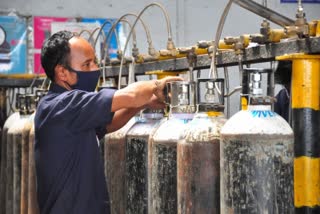New Delhi: Amid a stiffening standoff between various states over the supply of medical oxygen, the Prime Minister and the Ministry of Home Affairs Thursday announced a series of steps to boost production as well as to ease bottlenecks in the movement of oxygen-carrying trucks along state and district borders.
Among the major decisions, the Ministry of Home Affairs has invoked the Disaster Management Act and ordered State and Union Territories to ensure uninterrupted inter-state and intra-state movement of vehicles carrying medical oxygen.
The order also made it clear that the State authorities shouldn’t impose any location-specific restrictions on manufacturers.
“No restrictions shall be imposed on oxygen manufacturers and suppliers to limit the oxygen supplies only to the hospitals of the state and the union territory in which they are located,” said the order.
The Home Ministry has made local officials responsible for any lapses in the implementation of these orders.
“The district magistrates, deputy commissioners and senior superintendents of police, superintendents of police, deputy commissioners of police will be personally liable for the implementation of the above directions.”
PM reviews oxygen production and supply
Chairing a high-level meeting to review oxygen supply across the country, Prime Minister Narendra Modi asked top officials to work rapidly on increasing its production, boosting the speed of distribution and using innovative ways to provide oxygen support to health facilities.
Modi said states should come down heavily on hoarding and stressed the need to ensure faster transportation of oxygen.
Against the present demand from 20 states of 6,785 metric tonnes per day of liquid medical oxygen, the Centre has from April 21 allocated 6,822 metric tonnes to these states, a statement by the Prime Minister’s Office (PMO) said.
The statement also highlighted how the railways are being used for rapid and non-stop long-distance transport of tankers.
The first train under the ‘Oxygen Express’ initiative has reached from Mumbai to Vizag to transport 105 metric tonnes of liquid medical oxygen.
Similarly, empty oxygen tanks are also being air-lifted to oxygen suppliers to reduce one-way journey time in oxygen supply.
More than production, transport is a major problem
